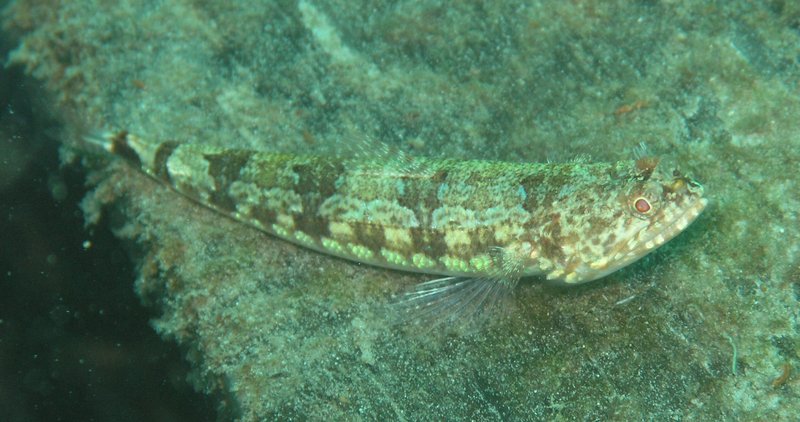|
| 질의: Fishes | 결과: 8523번째/13223 | |
Variegated Lizardfish (Synodus variegatus) - Wiki
| 제목: | Variegated Lizardfish (Synodus variegatus) - Wiki
| |

| 해상도: 2326x1227
파일크기: 494171 Bytes
촬영일: 2006:01:31 11:54:02
사진기: C8080WZ (OLYMPUS CORPORATION)
F number: f/3.4
Exposure: 10/1250 sec
Focal Length: 356/10
등록시간: 2007:08:16 13:32:33
|
Variegated lizardfish
From Wikipedia, the free encyclopedia
[Photo] Variegated lizardfish, Synodus variegatus. Taken at Sipadan, Borneo, Malaysia. Date January 2006. Author Jens Petersen
The variegated lizardfish, Synodus variegatus, is a lizardfish of the family Synodontidae, found in the western Pacific and Indian Ocean, at depths from 4 m to 90 m. It can reach a maximum length of 40cm.
The variegated lizardfish is rounded in cross-section with a broad moderately flattened head containing a large wide mouth. The jaws protrude equally. Both jaws and all the mouth bones are covered with conical barbed teeth. The strong thick pelvic fins serve as props when the fish is resting on the bottom waiting for prey.
Variegated lizardfish vary in color from grey to red hourglass shaped markings.
http://en.wikipedia.org/wiki/Variegated_lizardfish
| The text in this page is based on the copyrighted Wikipedia article shown in above URL. It is used under the GNU Free Documentation License. You may redistribute it, verbatim or modified, providing that you comply with the terms of the GFDL. |
|
^o^
동물그림창고 똑똑전화 누리집
^o^
|
|

